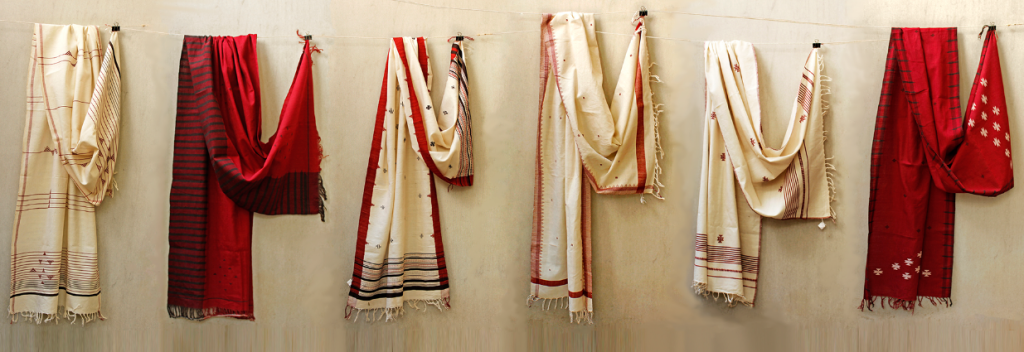Kotpad, a small village nestled in the picturesque state of Odisha, holds a weaving tradition that is both captivating and vanishing with the passage of time. The artistry of Kotpad weaving, passed down through generations, embodies a softer, more artistic lens of the world.
Weaver’s Homes at Kotpad
Within the weavers’ abodes, a long corridor houses their assembled pit looms, waiting patiently to bring life to the vibrant threads. The small windows and doorways filter the natural light, casting a warm glow upon the weavers’ nimble fingers, deftly moving across the loom. They eschew electric lighting, preferring to work in the gentle embrace of sunlight, honouring the age-old tradition that breathes life into their creations. The walls of the weavers’ homes, adorned with paintings created using organic colours derived from forest produce, tell tales of daily life in geometrically drawn shapes. Recurring motifs of people, horses, elephants, and celestial bodies like the sun and moon weave a visual narrative.
Makers of Kotpad
In the tribal regions of southern Odisha and Chhattisgarh, the weaving community known as the Mirgan, referred to as Panika in the Kotpad area, diligently preserves this unique craft. Their homes, adorned with wooden frames and thatched roofs, have a deep connection with nature. The earthen flooring, smoothened by hand with a layer of cow dung, exudes an earthy charm that harmonises with the weavers’ way of life. The weavers’ lineage can be traced back to the mediaeval Sant Kabir, a prominent reformer associated with the Bhakti movement, who belonged to the weaver caste. Inspired by Kabir’s teachings, the Panikas find a deep sense of identity and resonance with their craft.
Making of the Kotad
The intricate process of creating Kotpad saris begins with the collection of Aal tree bark and roots. The weavers procure the dried roots from the local market, ensuring a sustainable and eco-friendly approach to their craft. The Aal trees, found abundantly in the forests of Koraput, Malkangiri, and Umerkote, provide a unique and rare source of natural colouring that sets Kotpad textiles apart. Each motif woven into the fabric serves as a visual code, symbolising the distinct cultural traditions of the communities. The motifs are carefully chosen, inspired by nature and the weavers’ way of life, and they infuse the fabric with a sense of authenticity and connection to the surrounding environment.The motifs serve as visual codes, encapsulating the essence of their respective traditions and lifestyles. As a result, the Kotpad saris have gained immense popularity both within India and abroad over the past decade. The allure lies not only in the use of all-natural threads but also in the weavers’ meticulous dyeing process.

Both men and women play equal roles in crafting the exquisite textiles. Women prepare the indigenous dye, extracting vibrant red colour from Aal tree roots using castor oil, cow dung, and wood ash. This laborious process spans a month, resulting in soft, lustrous, and vibrant colours without any shine or smell. The meticulous dedication of the weavers ensures the preservation of traditional techniques in Kotpad textiles. Through this harmonious partnership, the community showcases their unity and shared purpose in creating these mesmerising fabrics.
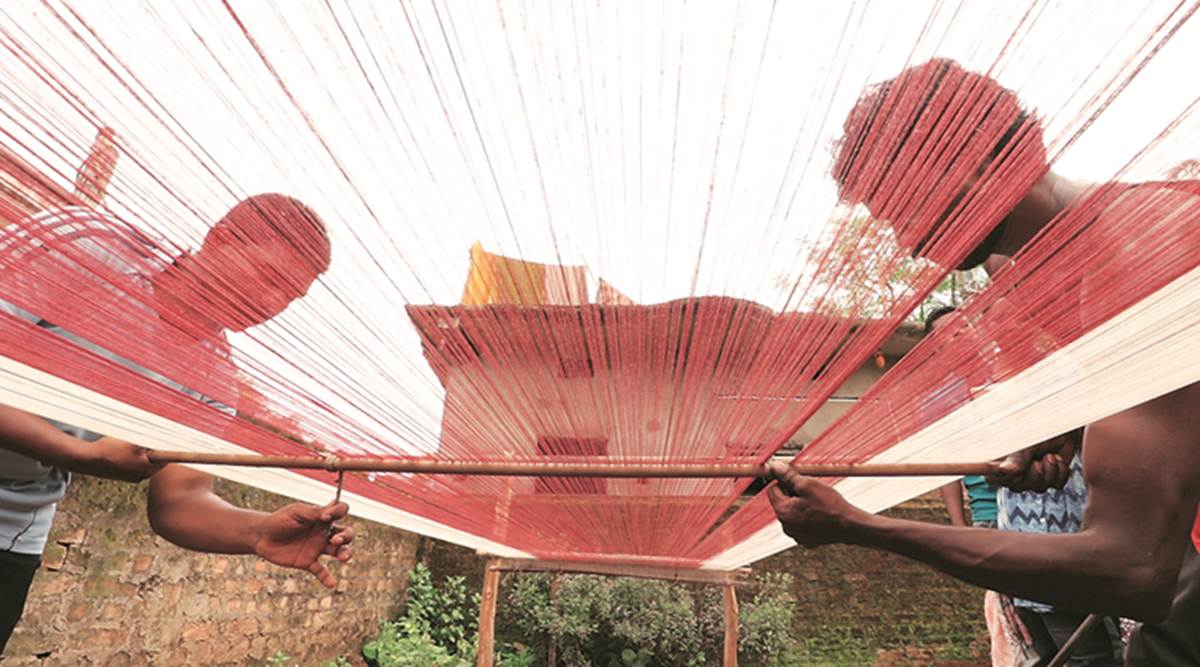
The Kotpad textiles are woven using coarse cotton yarn, typically ranging from 10 to 20 counts. The weaving process takes place on a simple yet highly refined three-shuttle pit loom, incorporating extra weft patterning for intricate motifs. The vibrant colours extracted from natural dyes include maroon and black, creating a visually striking palette. They are known for their ability to prevent skin rashes, provide warmth in cold weather, offer a cooling sensation in summer, and exude an elegant appearance.Traditionally, the Kotpad “pata” or sari has a shorter and narrower length compared to the standard six-yard saris. Adivasi women wear the pata, draping it up to knee-length, and cover the upper body without a blouse. The ends of the sari are knotted on one side of the shoulder, showcasing a distinct style. Adivasi men typically wear a simple loincloth and occasionally drape a handwoven towel over their bare shoulders, adding a touch of traditional attire to their appearance.
The allure of the Kotpad “pata” lies in its captivating aesthetic. The sari showcases the inherent beauty of unbleached or off-white coarse-textured cotton fabric, known as “deh.” Enhancing the overall appeal, the pata features a deep, rich red border known as “dhadi.” This striking border adorns both ends of the sari, creating a bold and eye-catching contrast against the neutral base. The deep al color red border serves as a defining element, adding a touch of vibrancy and character to the pata, while highlighting the skilled craftsmanship of the weavers.
Urban Changes in the Making of Kotpad
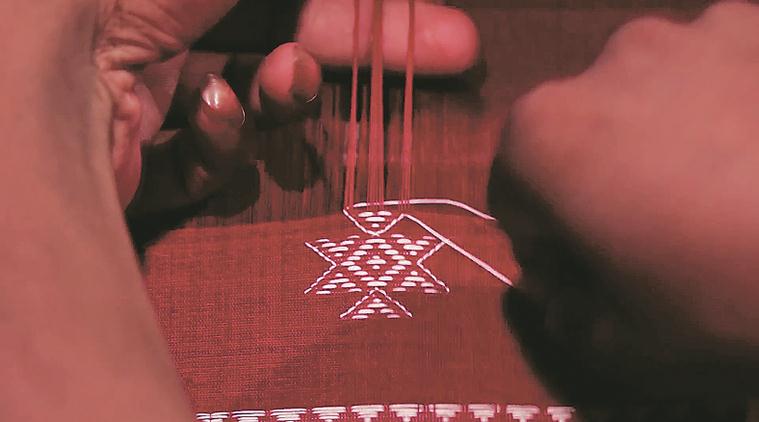
Kotpad weaving has undergone significant changes. The price of dried Aal roots, a crucial ingredient, has tripled. Weavers are restricted from using village ponds for dyeing and blamed for polluting the water. Moreover, acquiring wood for dyeing and processing yarn has become harder due to forest department restrictions, forcing them to buy wood at extra cost. These shifts have increased production expenses and strained the financial sustainability of Kotpad weavers. Adapting to these challenges while preserving their cultural heritage remains a daunting task for the artisans.
With the emergence of power looms and inexpensive factory-made garments has dealt a blow to the traditional Kotpad weaving industry. Out of the 200 families that once practised this ancient craft, only 20 to 30 families remain, operating around 25 looms. The village now has just seven master weavers, as many others have been compelled to close down their looms. The shift in market preferences has led to a decline in the demand for Kotpad textiles, threatening the survival of this cherished tradition.

In 2005, Kotpad natural dyed handloom fabric was granted Geographical Indication (GI) protection, recognizing its unique traditional knowledge and products. Efforts from designers and non-governmental organisations (NGOs) have promoted sustainable fashion and the use of natural dyed handloom fabric. However, despite these initiatives, the younger generation of artisans does not view this craft as financially rewarding, leading them to pursue alternative professions. The allure of other career paths, coupled with the challenges of sustaining the craft in a changing market, pose a threat to the future of Kotpad weaving. Despite ongoing efforts, preserving this cultural tradition and attracting young artisans to the craft remains a significant challenge.
Moreover, due to sheer negligence by government institutions and access to no government schemes and benefits, the Adhivasis working on the craft dwindled greatly. The saree made by the weavers using natural resources and naturally sourced material is exuberant in nature and is priced rather heavily as it is a tedious task to make one piece of textile. This also gives way for cheaper alternatives to be bought by the consumer instead and the significance of this rich culturally relevant textile dies down eventually.
Initiatives that have Kept Kotpad weaving alive
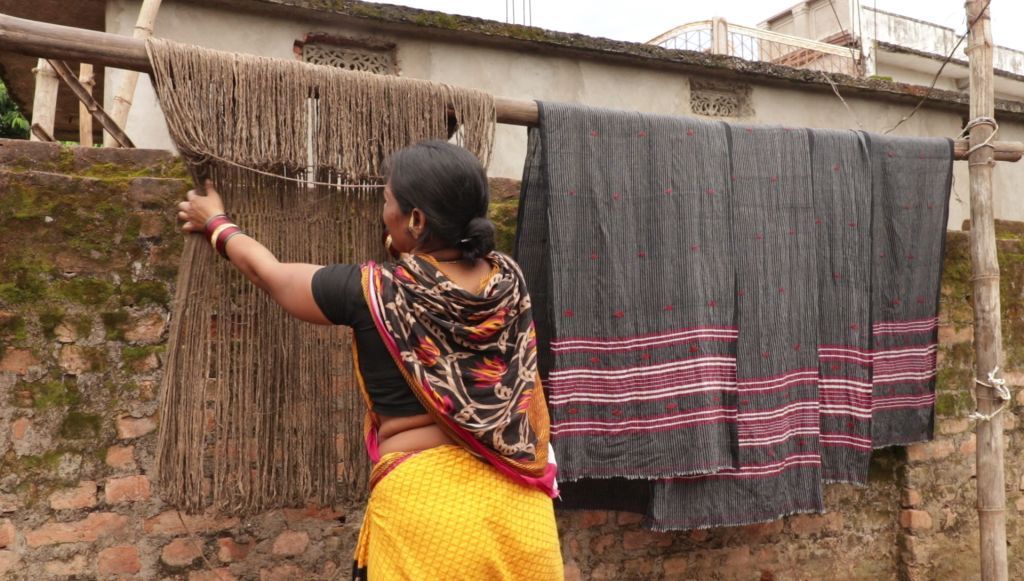
One notable organisation is the Kotpad Weavers’ Cooperative Society, which has been actively involved in promoting and marketing Kotpad textiles. Through the cooperative, weavers have received support in terms of training, access to resources, and market opportunities. The cooperative has been instrumental in bringing visibility to Kotpad weaves and establishing connections with designers and buyers.
The Peepul Tree is an organization that has made significant efforts to keep the tradition of Kotpad weaving alive and thriving. With a focus on sustainable development and the preservation of indigenous crafts, the Peepul Tree has played a pivotal role in supporting Kotpad weavers and promoting their unique textiles.
Renowned master weaver Kapileswar Mohonto received national awards for his exceptional Kotpad weaving skills. Filmmaker Biswanath Rath captured their struggle in the documentary “Kotpad Weaving: The Story of a Race Against Time,” showcasing the craft’s essence. The film’s success attracted fashion designers, bringing Kotpad textiles to prestigious runways. It raised awareness and revitalised the tradition. Gobardhan Panika, another master weaver, received the Padma Shri award in 2018, further highlighting Kotpad weaving’s importance. Speaking about this documentary and its impact, the director of the film Biswanath Rath says “The documentary has been made for an international audience and I hope like all our previous works, this too will reach international festivals, fora and platforms and will bring much-needed attention to Kotpad handloom at the global level. Following its world TV premiere on DD National (DD1), a few designers have evinced interest in the fabric. Even government officials are keen to show the documentary to various stakeholders.
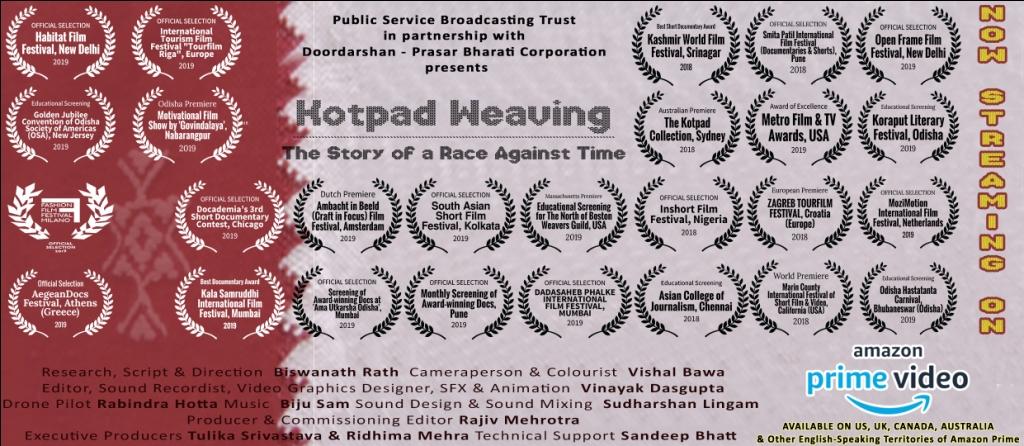
I hope all these interests will lead to debates and discussions at various levels on possible ways and means of addressing the current issues and saving the craft from extinction,” in an interview with Punya Prava Rath of Sambaenglish in 2018.
The story of Kotpad weaving echoes resilience and the power of heritage in the face of change. While the traditional craft slowly fades away, it finds solace in the hearts of those who treasure the delicate artistry and cultural significance it embodies. As we celebrate the weavers of Kotpad, let us embrace their exquisite creations and help illuminate the path towards a future where ancient traditions find new life.

Contributor

